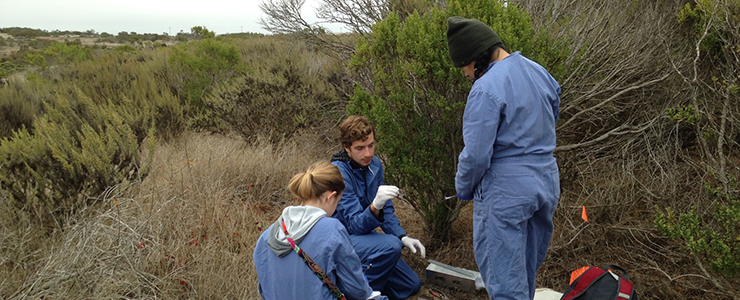Research
UC Santa Cruz Fort Ord Natural Reserve hosts an excellent sample of the rare maritime chaparral habitat that is endemic to the Monterey Bay region. For most of the 20th century, reserve land was occupied by the former Fort Ord US Army Base. The 600 acre reserve now serves the university community and the public as a place for research and education.
11 listed plant species live at Fort Ord Natural Reserve (including the federally endangered, state-threatened sand gilia, state-endangered seaside bird’s beak, and the federally threatened Monterey spineflower), along with six listed animal species (including the federally endangered Smith's blue butterfly). The site also supports a mixture of other habitats: coast live oak, coastal scrub, mixed annual grassland, and native perennial grassland.
The reserve was established because of its unique flora and fauna of the Monterey Bay maritime chaparral and as mitigation for the adjacent UCSC Monterey Bay Education, Science, and Technology Center (MBEST) under the Fort Ord Base Closure Habitat Management Plan (HMP). As part of this plan, the reserve will protect rare habitats and associated special-status species into perpetuity and foster teaching/research opportunities, especially in conservation biology of the HMP species.
Opportunities for Research:
Rich habitat diversity, unique biotic communities, and proximity to UCSC and other campuses create valuable teaching opportunities; students use the site for internship programs and independent research on projects that directly support management efforts.
Habitat Restoration Research:
Through a cooperative agreement with the U.S. Army, UCSC researchers study survival of rare native annuals and potential uses of native perennials as cover for large-scale restoration; UCSC undergraduates removed invasive exotic flora and restored seven acres of maritime chaparral; small disturbed areas available for other experiments in restoration ecology.
Selected Research:
Baseline studies: Status of HMP-listed species; preliminary surveys of birds, legless lizards, coast horned lizards, ants, and habitat-use patterns.
Conservation biology: Distribution and genetic studies of the black and silver forms of the California legless lizard; survey of coast horned lizards; survey of native ants and invasive Argentine ants; research on the demographics and community ecology of sand gilia, Monterey spineflower and shrubs of the maritime chaparral; the role of change in ant biodiversity on seed dispersal; comparative genetic and morphological analysis of different and gilia populations.
Please contact the Reserve Manager for more information about the availability of Fort Ord Natural Reserve for future research projects.
2016, retrieved from www.ucnrs.org

